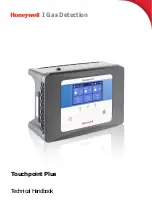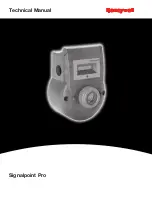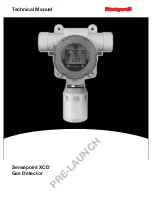
Using the Metal Detector
Establishing a Good Product Learn
Before inspecting products for inclusion of metal contaminants, you must first carry out a full product
learn process. See
This process consists of passing known good product packs through the detector so that it can
establish what effect the product has on the electromagnetic field as it passes through the aperture.
, the metal detector automatically makes the required settings in the
software and establishes a product window or envelope which is saved in memory for use every time
the product is selected for inspection.
The product effect is then effectively filtered out from the signal received when being inspected so that
signal variations caused by metal contaminants can be easily detected.
Carrying out a full product learn process is therefore a very important first step to ensure that the
metal detector performs effectively.
Establishing Detector Performance
Introduction
Once the metal detector has been set up with the product it is important to establish what size of
metal contaminant the detector is capable of finding and if necessary make manual adjustments in the
metal detector settings to achieve the required results.
This is achieved by attaching various sizes and types of metal to know good product samples and
passing them through the metal detector aperture to establish the level of detection that is achievable.
Loma Systems can supply a selection of sizes and types of metal test wands for attaching to product
samples for testing purposes. There are three types of wands: ferrous (chrome steel), non-ferrous
(brass), and 304 stainless steel. Stainless steel is included because sensitivity is generally poorer
than to other non-ferrous contamination due to the relative conductivity of the material. The wands are
supplied in a range of sizes depending on the product type being inspected.
In dry running the sensitivity can be measured by placing the test wand at the trailing and leading
edges of a representative sample of the product, and then passing the product through the detector.
The test wands should be placed at the leading and trailing edges of the product to ensure correct
product rejection. This is particularly important in metal detectors with no Product Registration Photo-
eye fitted, as the reject time is determined by the position of the contaminant relative to the product.
With conductive products the signal generated by the metal contaminant can be masked by the
product itself. It is therefore important to test the product with test wands not only at the leading and
trailing edges, but also at the product‘s centre.
Relative Detectability of Non-Ferrous Metals
The resistance, and hence ease of detection, of different non-ferrous metals varies widely. The more
conductive they are, the easier they are to detect, as shown in the graph below.
Sensitivity to stainless steels is invariably poorer than to other non-ferrous contamination. This is
largely due to the relative conductivity of the material.
It is also possible to phase out a particular size of non-ferrous contaminant but be able to detect a
smaller or larger size. This is because the metal signal matches the product signal and has been
compensated out.
It is important to be aware of the effects of contaminant orientation and relative detectability. The test
wands used throughout the metal detection industry are spherical, as this eliminates any orientation
effects and ensures repeatability. However, in practice this may not always be the case, therefore the
user must be mindful of this fact.
70
Содержание IQ3
Страница 2: ......
Страница 10: ......
Страница 26: ......
Страница 43: ...Installation 33 ...
Страница 60: ...Installation THIS PAGE IS INTENTIONALLY LEFT BLANK 50 ...
Страница 70: ...About the Metal Detector Range THIS PAGE IS INTENTIONALLY LEFT BLANK 60 ...
Страница 74: ...Getting Started IQ3 Dual Line Display Menu Map 64 ...
Страница 116: ...Operating Instructions THIS PAGE IS INTENTIONALLY LEFT BLANK 106 ...
Страница 140: ...Maintenance THIS PAGE IS INTENTIONALLY LEFT BLANK 130 ...
















































